Coping with Fatigue
Section one: Introduction and module aims
Introduction
This module will look at how fatigue can affect you after a brain injury and give you information on ways to help you cope with this.
‘Fatigue is a feeling of constant tiredness or weakness that doesn’t go away with rest.’ (Ditter.A.J et al. 2004)
Aims of the module
This module aims to:
- Help you learn and better understand how fatigue can affect you following your Brain injury
- Provide advice on how to recognise what brings on your fatigue. We call this your ‘Triggers’
- Give you hints and tips on how best to manage your everyday fatigue
- Help give you ideas on how to pace yourself in your everyday life to save your energy.
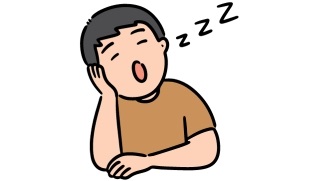
Section two: What is brain injury fatigue?
Brain injury fatigue is one of the most common symptoms experienced after a brain injury. Someone who has had a mild brain injury can be affected just as much someone who has had a more serious brain injury.
Let’s look at the difference between normal fatigue and fatigue after brain injury:
“Everyday” fatigue
- Lasts for a short period of time
- Happens after we have done something that uses energy (e.g. concentrating, exercise)
- Happens when we haven’t slept well
- Goes away after we’ve had a rest
- Goes away quickly
Fatigue after brain injury
- Does not always go away after a rest
- Feels different, more intense, lasts longer and can build up
- You can’t tell when you’re going to have it
- Makes it hard to think and do things
- Can make you feel bad tempered, low, stressed and anxious
Section three: How might this affect me?
People can feel the effects of fatigue in different ways but there are usually common symptoms. For some people, fatigue can make other brain injury symptoms feel worse, such as anxiety or feeling pain more. Below are some examples from people who have had a brain injury.
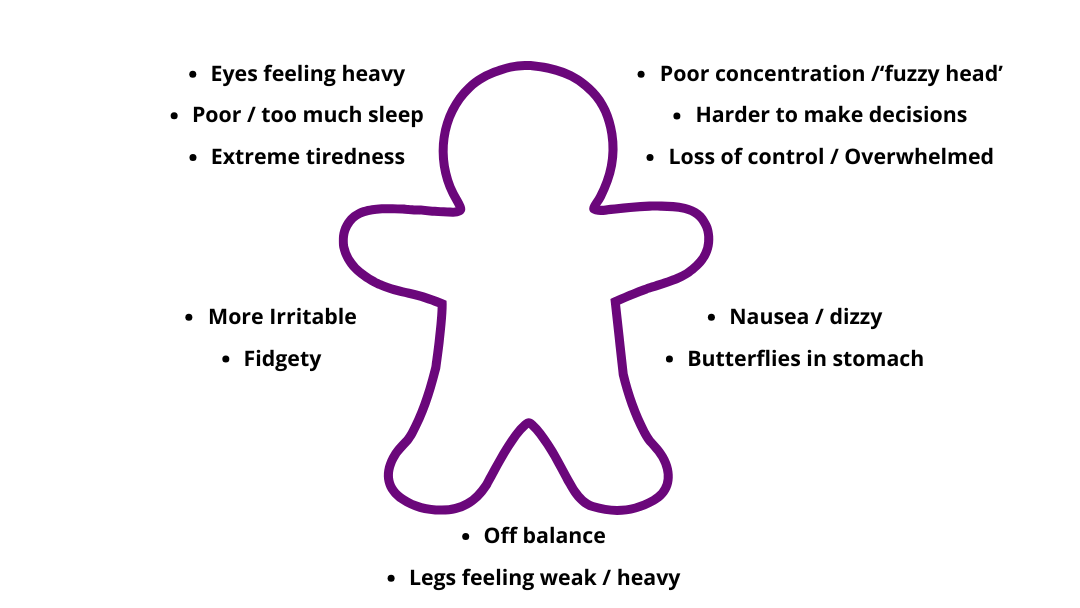
There are different reasons for these symptoms. It’s important for us to understand what causes them as it helps us to manage our daily activities.
Take some time and write down the symptoms you experience.

Factors that can cause Fatigue
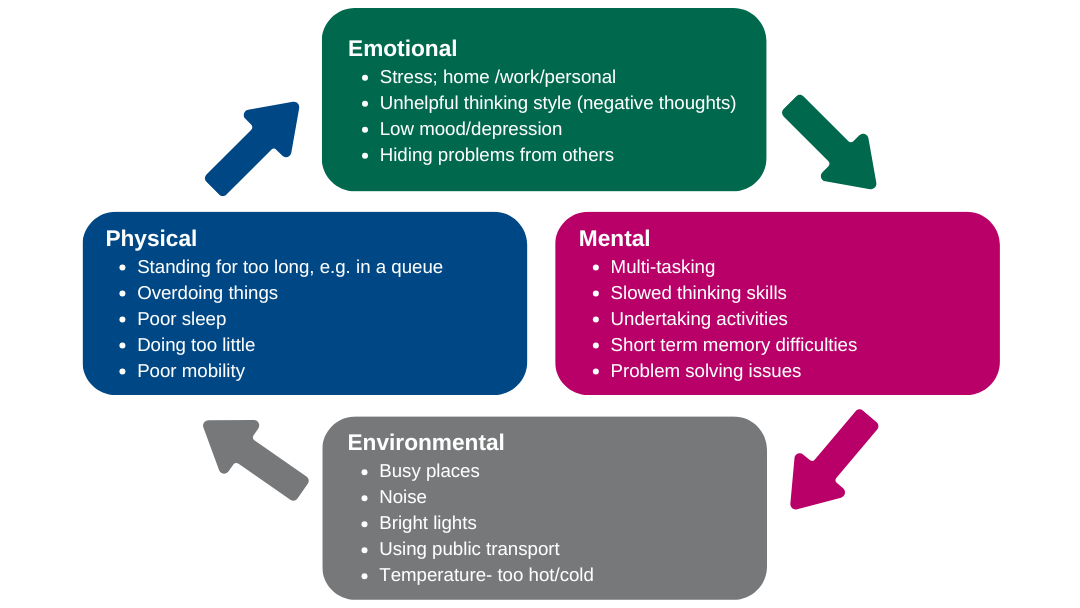
It is thought that all the extra concentration and effort that’s needed after a brain injury can cause fatigue with every day activities
Examples of what these activities are;
- Physical walking the dog
- Cognitive e.g. completing a form, reading a book
- Emotional e.g. thinking about what has happened, worrying about the future
- Social e.g. family visits, meeting up with friends
- Environmental e.g. shopping in a busy supermarket
My Thoughts and Emotions
It’s common to have negative thoughts after you’ve had a brain injury. They might be about how you’re feeling, changes in what your able or not able to do, or how you think others see you.
These thoughts can come in several forms for example:
“I am so fed up with feeling tired”
“I can’t cope with this”
“I feel awful”
“Will this ever get better?”
This can cause a cycle that affects both your energy and activity levels.
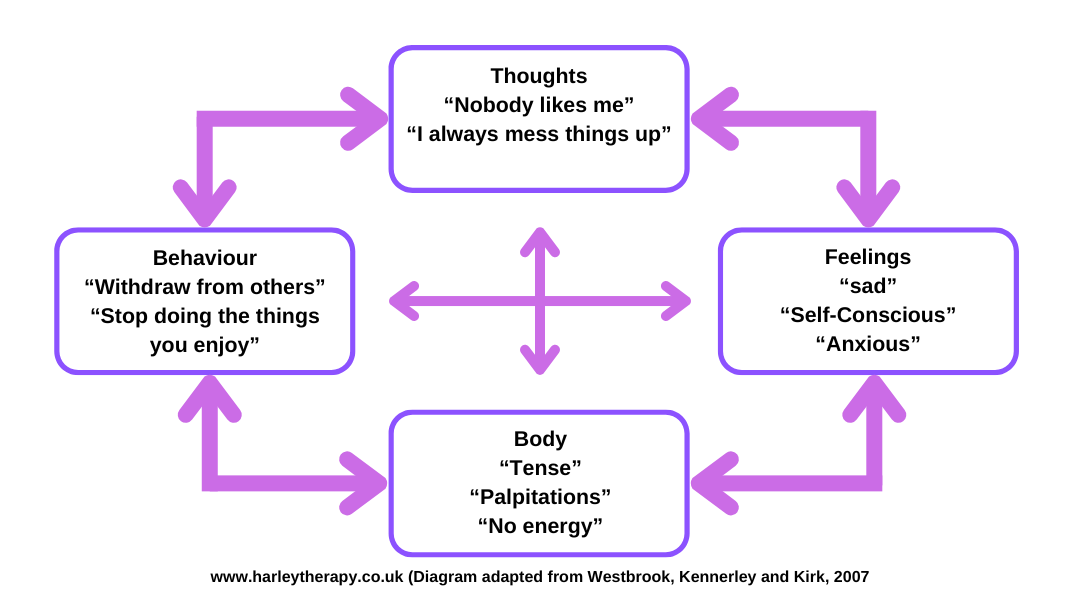
Try to be aware of any negative thoughts you might have as they can affect how you cope with fatigue and your brain injury.
Speak to someone as a “problem shared is a problem halved”. This can be a family member, friend, care giver or health professional.
You may also find the module on Anxiety helpful. This looks at negative thoughts in more detail and give hints and tips on what can help, links to other organisations and websites.
There are lots of things that cause fatigue. These are called triggers. Let’s look at them in more detail and think about what your personal triggers are.
Personal triggers
Personal Triggers are things that are personal to you that trigger or cause you to become fatigued. Here are some quotes about personal triggers from people who experience fatigue following a brain injury to help explain what we mean.
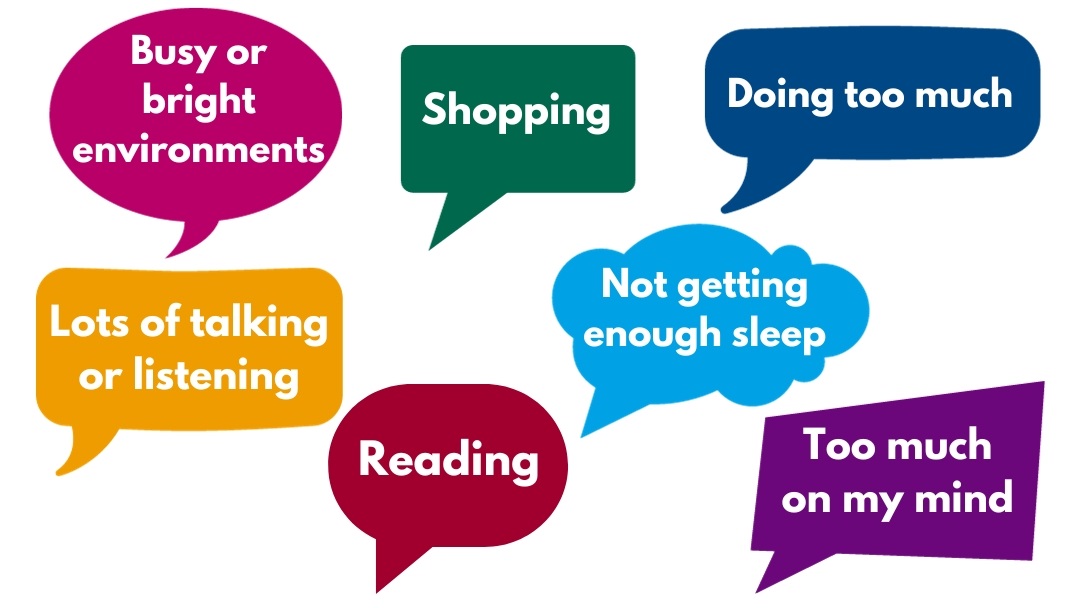
What are your triggers? Take a few minutes to think what they are and write them down on a piece of paper. You can ask someone to help you.
Now that you‘ve thought about what your personal triggers are, let’s learn a bit more about something called the Boom and Bust Cycle.

Boom and Bust

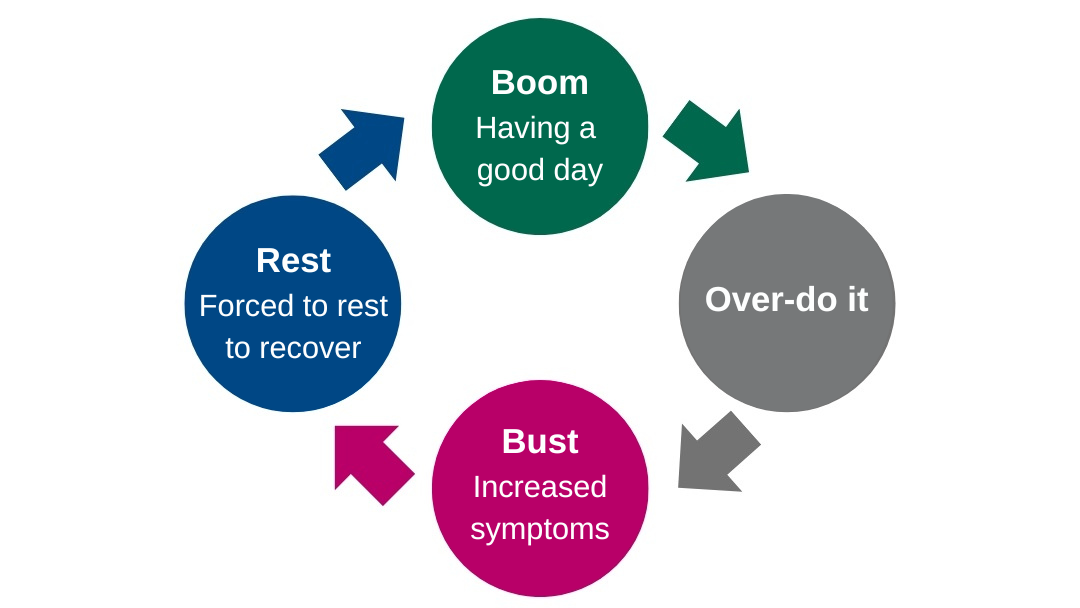
- “Boom and bust” is a common pattern for people with a brain injury.
- People generally tend to do as much as possible when they feel they have a lot of energy. This can then lead to fatigue and having to rest to recover.
- If you only take your rests when you are exhausted, it will take a long time to “recharge your batteries” (we will look at energy batteries later in this module.)
- If you take rest breaks as part of a daily routine, then you manage your energy levels more effectively
- The key point is to rest regularly before you become exhausted. Being able to recognise your early personal triggers will help.
Section four: What can I do to help myself?
There is a saying “knowledge is power “ and this is really important in recognising our own personal triggers so we can manage our fatigue. This next section will show you how to create your own personal energy battery.
What is a personal energy battery?
A personal energy battery is an easy way of recording and keeping track of how you’re feeling and how things affect you.
It asks you to think about your energy levels and how you feel when you’re full of energy. Try to imagine a battery that is fully charged, half-charged or no charge when you are completely exhausted.
It may seem a strange idea but people have found this helpful in recognising the signs of fatigue and what it feels like for them.
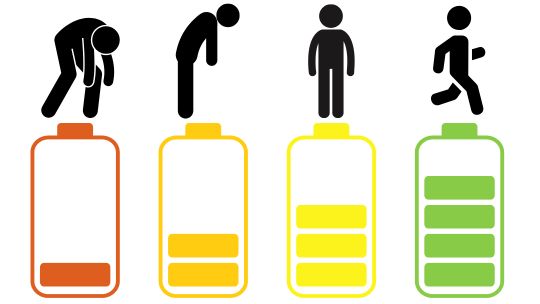
My Personal Energy Battery
Below is an example of how someone with a brain injury can feel at each stage in their own “Personal Energy Battery”.
Have a read of it then STOP, THINK and REFLECT.

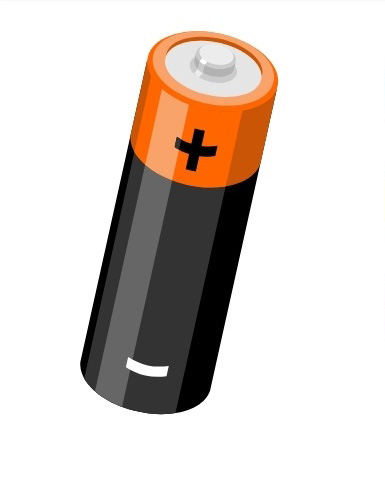
“When my battery is fully charged – for example, I feel motivated to do things, more in control, happier, more energetic.
When I feel like this I go out with family/friends, go the gym, go to the supermarket, read my book.
“When my battery is half charged, for example, I feel quite tired and forget things more, I’m less motivated, my body feels heavy.
When I feel like this I am more easily distracted, it is harder to do my day to day tasks and they take longer to complete.
“When my battery has no charge and is empty, for example, I feel overwhelmed, low, sometimes tearful and exhausted.
When I feel like this I don’t want to go out, I don’t have a shower/get dressed, I might stay in bed.
Think of a few words to describe how you feel when your battery is Fully charged, then Half charged, then when you have almost No battery charge.
You can write them down or click on this link to use a personal battery PDF sheet.
Hopefully you will now be able to start understanding how fatigue affects you and the reasons why it is worse at certain times. So let’s look at how you can take some positive steps to better manage it.
“The 4 P’s”
The 4 P’s stand for PLAN, PACE, PRIORITISE & PROBLEM SOLVE. They are helpful when planning out your daily activities. The purpose is to give you back control in managing your symptoms by helping you conserve your energy.
But what do they mean and how do we do this?!
- PLAN – This is about how you organise your day ahead. It really helps to plan your activities in advance.
- PACING – This is about getting a balance between activity and rest. It’s a way of reducing your fatigue by spreading your tasks out throughout the week.
- PRIORITISE – This involves you looking at everything you have to do in a typical day. You then rate these tasks in order of importance. Decide which tasks you have to do, what can wait or what could be given to someone else.
- PROBLEM SOLVE – It’s not what you do, it’s how you do it! If you are struggling with a task think about how you could do it differently to make it more manageable. Try applying the 4 P’s and consider:
-
- What’s essential
- How long will things take?
- Can I make things easier?
- When can I rest? How long for?
Energy Conservation
Energy Conservation means looking at your daily routines to find ways to reduce the amount of effort needed to do certain tasks. It also helps you maintain a level of activity. Below are suggestions that you can use to help balance your energy levels by applying the 4 P’s we spoke about above. You can problem solve your activities by pacing, planning and prioritising as shown below.
Problem to Solve – Washing/Grooming
Priorities
- Do essential tasks first, such as brushing teeth, washing hands and face
- Think about how often you would like or need to do tasks like washing your hair or shaving in a week
- Do you need to wash your hair or could you try using dry shampoo?
Plan
- Gather all the items you need for washing and grooming beforehand
- Make sure they are within easy reach
- Pre-plan what day you will wash your hair
Pace
- Sit to wash your face, brush your teeth or dry your hair
- Short hair is quicker to dry and style
- An electric toothbrush or razor uses less effort
- Use a Micro fibre towel or head towels
- Liquid or foam soaps lather quicker
- Take rest breaks after each step if needed
Problem to Solve – Bathing/Showering
Priorities
- Do you need a bath or shower every day?
- Do you need a bath or shower today or could you have a wash down instead?
- Think about the temperature. Try not to have your bath or shower too hot or cold.
Plan
- Wash at a time when you have enough energy
- Allow plenty of time to complete this task
- Gather everything you will need, including toiletries, towel and clothing
- Keep items within easy reach
Pace
-
Use a stool/chair in your shower
-
Sit to undress, wash, dry and dress
-
Use a long handled sponge to wash back and feet
-
Use a towelling bathrobe to dry your body
Problem to Solve – Dressing
Priorities
-
Could you or could someone help you to rearrange your wardrobe and drawers so that all the clothes you wear regularly are easy to reach?
-
Can someone help you get your clothes out?
-
Could someone help you to get dressed?
Plan
- Before starting, gather all clothes together. You could even look these out the night before.
- Allow plenty of time. Always try to build in more time than you think you might need.
Pace
-
Sit down to get dressed
-
Wear clothes that fasten at the front and are loose
-
Wear comfortable, shoes and clothing that are easy to take on and off
-
Shoes with velcro strap or elastic laces and clothes with elastic waist bands may help
-
Dress lower half of your body first
-
Put pants and trousers on at the same time and then pull them up together
-
Put skirt on over your head
-
Sit down to put on shoes and socks
-
Lift and cross one leg onto your knee to bring your foot closer
Problem to solve – Cooking
Priorities
-
Is cooking important to you or can someone else help you?
-
Is it something you enjoy?
-
Do you need to prepare from scratch?
-
Could you have something ready prepared?
-
Could you order your shopping online?
Plan
-
Gather all items before beginning
-
Arrange kitchen so that regularly used utensils are within easy reach
-
Create a menu planner for the week ahead
-
Could you or someone help you to batch cook?
-
Could you make a meal in the slow cooker i.e. one pot meals?
-
What about using a microwave?
Pace
-
Think about batch cooking at a time of day when you feel at your best
-
Use pre-cut/sliced vegetables (frozen or fresh)
-
Could you sit to do the task? (An Occupational Therapist may be able to provide a perching stool and/or Kitchen Trolley)
-
Adaptive cutlery and chopping boards can all be helpful
-
Using an electric tin opener or other powered kitchen tools like a whisk
-
A metal colander in a pot to save lifting a heavy pan with boiled water
-
Hot water dispenser can be used instead of a kettle
-
Plastic jug to fill dispenser, kettle or pan
Problem to solve – Household tasks
Priorities
-
What’s important for you to complete today?
-
Could certain chores be given to someone else? (could someone change the bed sheets for you?)
Plan
-
Could you clean one room a day?
-
Get a lightweight cleaning caddy that holds all your cleaning items
-
Can you have cleaning products upstairs and downstairs?
-
Could your ironing board be set up permanently in a room or area of your house?
-
Buy clothes that are easy to wash and need little ironing
Pace
-
Use a lightweight hoover
-
Spread out chores over the whole week rather than trying to do them all at once
-
Put on smaller loads of washing
-
Could you sit to do the ironing or sort clothes?
-
Move wet clothes into a dryer a few items at a time
-
Use a trolley or bag to take washing outside to hang it up
Your Daily Plan
Making a Daily Planner
Now that you have read about everyday ways to manage your energy with tasks, practice making a daily plan. This will help you be more confident in doing things more easily. It will also help you see what steps you need to take. Afterwards you can write down what helped.
So, below are examples of a Daily Plan. It will take practice and trial and error. But with practice, you will get there and you are not on your own.
It is good to have a family member or friend to support you with your plan.
| Task | What steps do I need to take? | What helped? |
|---|---|---|
| Example – Meet a friend for coffee |
|
|
| Example – Cooking a meal |
|
|
| Example – Hoovering |
|
|
By planning out your everyday activities, it will become easier to make it work for you!
Sleep Hygiene
Now that you have learned about lots of practical helpful strategies, let’s look at sleep problems, which are common following a brain injury. A lack of sleep over a long period of time can have a knock on effect on your energy levels and fatigue management.
Sleep hygiene refers to healthy habits and environmental changes that can help you get a good night’s sleep.
Below are some helpful sleep hygiene tips and a video of personal experience.
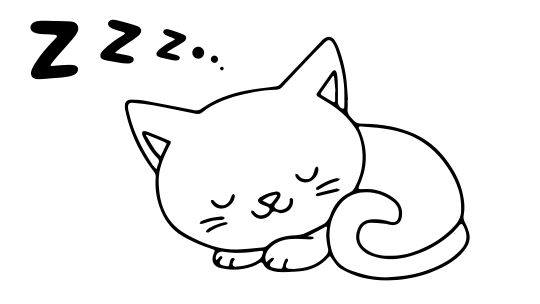
Do:
- Go to bed and get up at the same time every single day
- Turn off tech, devices and phones at least 30 minutes to an hour before you go to bed
- Don’t have caffeine drinks like cola or coffee for a few hours before going to bed. Instead, try a milky drink or caffeine free herbal tea
- Listen to sounds that help you to unwind
- Have a relaxing bath
- Try using blackout blinds or curtains so that the room is dark enough
- Make sure the room isn’t too hot or cold.
- If you’re still awake after 20 minutes, get out of bed and go to another room to try something relaxing like reading or listening to gentle music
- Have a notebook beside your bed to get worrying thoughts out of your head and onto paper
- Even better, try to schedule a time earlier in the day to write down worries and come up with an action plan
SameYou Org – Sleep After Brain Injury and Stroke
Here is a Summary of all you have been learning
How to Manage Fatigue Successfully:
- Try and get a good night’s sleep (Sleep hygiene)
- Use the 4 P’s
- Express your feelings
- Be kind to yourself
- Balance Rest and activity
- Ask for help
- Use the links and material included to help
Resources
Where else can I look for help?
Royal College of Occupational Therapists energy conservation link
Headway Managing Fatigue after Brain Injury Booklet
Relaxation
NHS Breathing and relaxation exercises for stress which includes audio playlist and videos
NHS Mindfulness
Sleep Hygiene
- www.nhs.uk/every-mind-matters/mental-health-issues/sleep/
- https://www.nhsinform.scot/mind-to-mind/sleeping-better
Apps available to download:
- Calm – Free relaxation/breathing exercise (payment required for others)
- Headspace – (payment required)
- Feeling good
Reference
Dittner, A.J., Wessely, S.C. and Brown, R.G. (2004) The assessment of fatigue: a practical guide for clinicians and researchers. Journal of Psychosomatic Research 56(2), 157-170. [Abstract]

